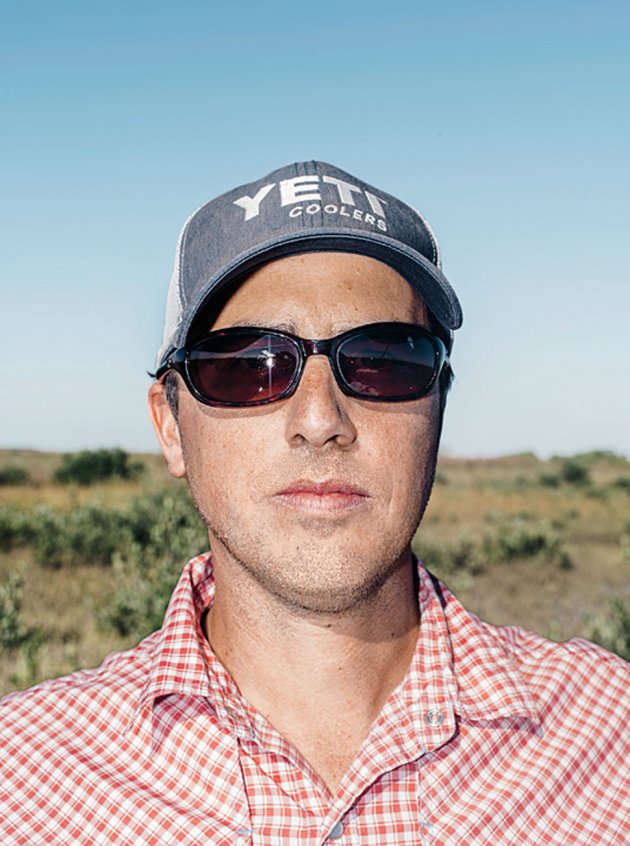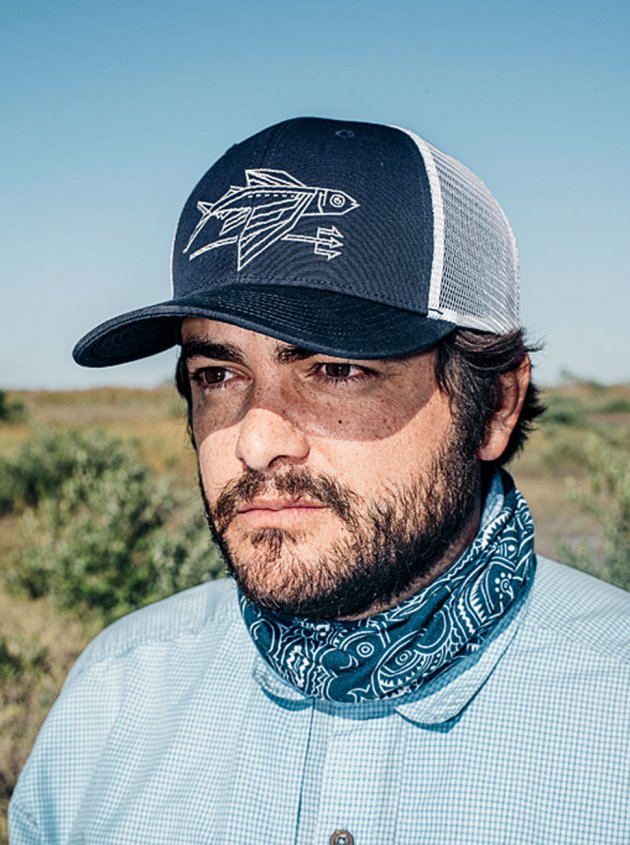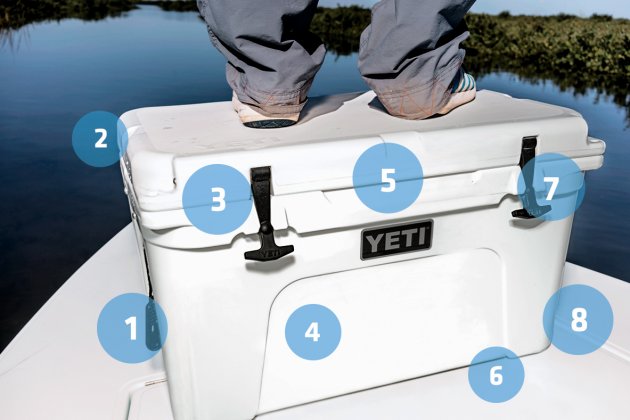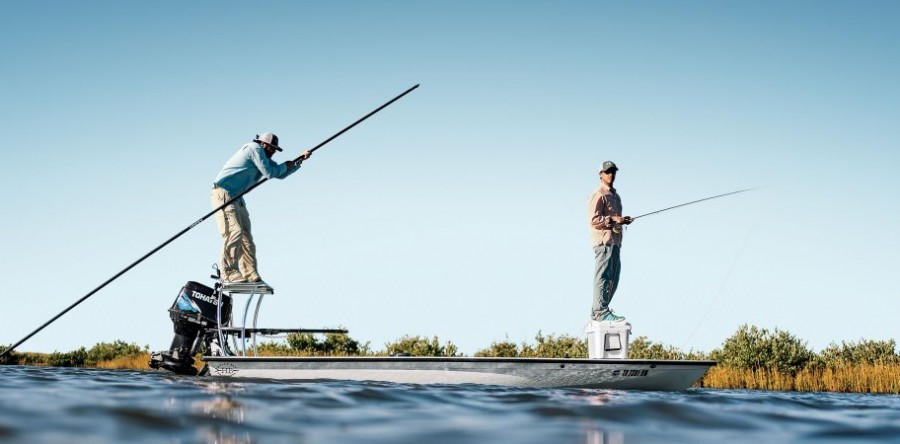How Two Brothers Turned a $300 Cooler Into a $450 Million Cult Brand
When two frustrated fishermen set out to reinvent the cooler, they didn't expect to upend an industry.
By Bill Saporito, February 2016 <Article Source>
Ryan Seiders handles a fishing rod like Harry Potter does a wand.
We're floating down the Colorado River near Austin, and our guide points toward a submerged log and instructs us to cast just beyond it and retrieve the lure slowly. Seiders flicks a wrist and bull's-eyes the spot with a plastic worm. A couple of cranks later and he is hooked into a five-pound largemouth bass. A few minutes after that, his younger brother Roy gets into one. "Football," Roy yells, as a fat bass flies into the air and is urged toward the boat.
Not bad for a Tuesday afternoon in October. And it beats work. Or maybe it is work. Hard to tell. The whole idea behind Yeti, the company that the pair co-founded, was to design a cooler that could withstand their fishing tactics--primarily, one they could stand on without fear of collapse as they sight-casted for redfish. The secondary goal was to afford them time for fishing and hunting. Work some, fish some. Has a nice rhythm to it.
"All I really wanted was a cool fishing-rod company," says Ryan. That didn't quite work out. Instead, he and Roy have hooked into a monster, a company that is making an unprecedented run in the outdoor-equipment market by taking a low-end commodity and turning it into a coveted brand.
Yeti is the Range Rover of cold. Its overbuilt Sherpa coolers hit the market in 2006 priced between $250 and $300 a pop, an astounding premium--"10X," as Roy likes to label it--over the average Igloo or Coleman. Yetis now go for up to $1,300 for the 85-gallon Tundra 350. The cooler, when locked, is so strong that it's beyond the ability of a hungry grizzly to crack it. (It was tested on one and approved by the Interagency Grizzly Bear Committee.) "People in Texas will brag that their cooler is grizzly-proof, even though there's not a grizzly within 1,000 miles," says Roy.
And that tells you about the power of the Yeti brand--customers are the ones bragging on it. "This brand is just on fire," says Mike McCarty, category merchandising manager for REI, a high-end outdoor-products retailer. After a test program in 2014 went through the roof, REI now carries Yeti hard coolers as well as its new soft cooler, called the Hopper, plus the company's stainless-steel Colster and Tumbler drinkware.
Started in 2005 while the boys were dabbling in the fishing-rod (Ryan) and boat (Roy) businesses, Yeti began to take off in 2011 when sales hit $29 million, as word spread among the hardcore "hook and bullet" crowd. In 2014, that figure hit $147 million as the brand migrated into other segments, such as oil field and barbecue. Still, the brand had little recognition, even with outdoor enthusiasts.
In 2015, sales skyrocketed as Yeti became a gotta-have label. It was the payoff from years of grassroots marketing to fishermen and hunters who not only spread the word but helped Yeti spill into other markets. Yeti's ability, with the help of an outside investor, to grow into a more sophisticated sales and marketing organization then became a multiplier. That's why the brand is as at home in a beach house in Duck, North Carolina, as it is in a duck blind in Texarkana. Yeti is even a cultural touch point. In his song "Buy Me a Boat," which reached No. 1 on the iTunes country chart, Chris Janson warbles that money can't buy happiness, "but it can buy me a boat, it can buy me a truck to pull it, it can buy me a Yeti 110 iced down with some Silver Bullets." For 2015, Yeti closed in on $450 million in sales, up from $5 million in 2009.
For entrepreneurs and product designers, this is the ultimate goal: turning a commodity into an object of desire. "It's just a fucking cooler," laughs David Srere, co-CEO and chief strategy officer of the branding and design agency Siegel+Gale, with obvious admiration. Because what the Seiders brothers have produced is more than a box that will keep your brewskies chilled longer. Their ability to carefully build an authentic, durable brand story is just as important, maybe more so, than the indestructibility of their product.
"What their story is about is not this cooler," says Srere. "It could have been a zillion things, but they have built their community, their operating philosophy, around their passionate commitment to the outdoors." Large corporations would pay anything for this kind of credibility, which is what makes it unobtainable to them.
Ironically, Yeti is going to have to behave a bit more like a large corporation to fend off copycats, as well as to expand its product line and manufacturing capacity. The question is how the brothers can do that without losing their hard-won cred.
The sons of a nurse and an outdoors-loving high school teacher, Ryan, 42, and Roy, 38, were raised to be good entrepreneurs. In the 1980s, as part of a project he assigned to his students, their father, Roger, an industrial arts teacher, came up with a glue that fixed a common fishing-rod problem. It then became a business, and Roger found himself out of the education field.

Roy Seiders focused on durability over cost. The result was a cooler 10 times the price of the competition’s. Then he figured out how to sell it.
Almost. He taught his sons how to build things. "He always had woodworking equipment, so we'd go get our hands dirty and make stuff," says Ryan. Dad also dragged the entire family-- including Roy and Ryan's brother and sister--to trade shows. "We would run around the trade shows," says Roy. "And I think, more than anything, being with Dad exposed us to small business, wearing all the hats, all the functional areas in the business, and then [trade shows] exposed us to...the fishing-tackle industry."
After graduating from Texas A&M (Ryan, 1996) and Texas Tech (Roy, 2000), the Seiders boys started cooking up business plans. Having worked with his father in the fishing-rod specialty area, Ryan started a custom-fishing-rod business keyed to the Gulf Coast market. "Had a great time, made a lot of good contacts," he says. "Never made much money." Roger had also taken to building boats, mostly as a hobby. Roy began to make a business of that: customized, aluminum boats for stalking redfish in the shallow coastal waters of the Gulf of Mexico.
Roy's customized boat called for three coolers that were integral to the fishing itself, especially one that sat in the bow and was supposed to be used as a casting platform. "This boat was kind of well thought out and heavy duty and durable," says Roy, "except for...." Yup, except for the coolers. They were seeking better options when Ryan spotted an import from Thailand at a local retailer during a break from a trade show.

Ryan Seiders spotted a rotomolded cooler at a boat show and called Roy with the news that he’d found what they’d been looking for. Their trip to a Philippines factory proved him right.
Impressed with the cooler's ruggedness, but not its design or finish, Roy bootstrapped an import business to become a distributor for the Thai cooler. He concentrated on the market he knew best, fishing-tackle shops and other independent outdoor-equipment retailers. While he was making progress in sales and distribution, he wasn't making any progress with the product itself. And the cost of addressing warranty issues was mounting. "I started losing sleep about the ultimate cooler and dreaming about, 'What if we did this? What if we did that?'" he says.
Out of frustration, the pair made a trip to Thailand to try to persuade the manufacturer to make some improvements. That effort proved fruitless. They then heard about a plant in the Philippines that seemed promising. "Ryan and I debated whether we should go to the Philippines," says Roy. "We convinced ourselves to go, and we sat down with that factory and quickly realized that these guys were on a different level. They were capable of building a great product for us." When they left, Roy remembers thinking to himself: "Hey, this is now our future. It's time to start our own dealing and our own brand name."
To fund the Yeti prototype, Roy used money from the Thai-cooler importing business. By then, Ryan had sold his fishing-rod business. One of his best customers had kept asking him how much he wanted for the company. "I thought about a high price--it would take me forever to save up that money--and he said, 'Sold,'" recalls Ryan. "And my heart just kind of sank. I was thinking, 'Oh, shit, I should have said double that.'" He was now a cooler manufacturer full time.
Yeti's hard coolers are made through a process called biaxial rotomolding. Kayaks and those orange plastic barriers you pass on the road are made with this process. It involves pouring a powdered polyethylene plastic resin into a mold, and then heating and spinning the mold along two axes. As the powder liquefies, it layers across the mold precisely, creating a seamless, nearly indestructible product.
The cooler is designed so that anything that is breakable is also quickly replaceable. "So if you're at home and your dog chews that [rope handle] off, instead of sending a replacement cooler, we're letting the customer know, 'Hey, take a flathead screwdriver, pop that out, this falls out, and we'll send a new one,'" says Ryan. In Roy and Ryan's world, everyone has a dog and a truck and is handy with a flathead. If you don't own a dog and a truck and aren't handy, you can still feel smug about the over-the-top design you've chosen.
The byproduct of the construction is ice retention. "We will debate every detail, and we'll both lose sleep thinking about what's best for the product," says Roy. They also debated the company name. Roy thought of it in bed, obsessing again. Of all the names they floated to friends and family, it was the one that most remembered: Yeti, the Ice Monster.
When they got to a prototype, they realized they'd have to sell their cooler at retail for about $300 a pop initially. No such market existed. There was no point in selling to Walmart or Target; they needed another distribution path. Calling on hardware and tackle shops, they offered this proposition: Why try to compete with Walmart selling $30 coolers and keeping the $5 margin? You can sell a $300 cooler and keep $100.
Ryan and Roy were convinced Yeti would sell to people just like them. So they continued to work the small accounts and the trade shows. That's where Walt Larsen, head of Scales Advertising, Yeti's agency until 2012, found Ryan, standing in front of a table looking like he was selling pies. (The company's current agency is Austin-based McGarrah Jessee.) "I loved their product," he says. "I loved that they were going opposite the market." Yeti's other big advantage, Larsen says, was its target audience: "I told them the outdoorsman is easy and inexpensive to reach, and that there was a monumental opportunity if they were aggressive. And they said, 'Sounds great.'"
Larsen helped the brothers create a simple tagline--"Wildly Stronger, Keep Ice Longer"--and focused their marketing on the hunter-fisher core by hiring influential guides and fishermen as brand ambassadors. In the first few years, with every cooler shipped Ryan and Roy threw in a Yeti hat and T-shirt to create a conversation around the product. "I really felt like we educated our consumer on the selling points of our product," says Roy. "So when someone had a Yeti cooler in the back of their truck, they could defend that."
By 2011, with sales outstripping manufacturing capacity, Ryan and Roy knew they had a 100-pound fish on a 10-pound line, and that their dream of a modest lifestyle business was actually too small. They also knew they needed help to figure it out. In 2012, they sold a majority position to Cortec Group, a private equity firm that brought operational experience, though not necessarily outdoor experience, to the table. "I'm one of the worst fishermen in history," says Dave Schnadig, Cortec Group's managing partner. But Cortec had previously owned a rotational molder and thought it could help Yeti address its supply chain issues. Yeti contracted with rotomold manufacturing plants in the Midwest, in addition to the plant in Asia. It's a rare case of reshoring, but it has helped speed delivery and lets Yeti control the manufacturing process.
Yeti had to outsource logistics in 2012, when the 35,000-square-foot warehouse that Ryan and Roy feared they would never fill became hopelessly inadequate. "The only scary thing is the volume," says Ryan. "There are challenges at a much bigger scale: quality, supply chain. The supply chain can't keep up. It's a good problem to have, but it's a problem."
The company also reeled in its sales from independent reps to gain more control over growth. "That was a really big first," says Schnadig. Yeti recruited Paul Clark, the former head of sales at TaylorMade Golf, to build a sales team.
At the company's Austin headquarters, the brothers changed their hiring philosophy. As many founders do, they had first hired "athletes"--friends and friends of friends who could handle everything from marketing to shipping. They now had to shift from athletes to skill-position players--the product design team could no longer be named Ryan and Roy. Though the company has doubled in size in the past year, to 200 employees, 60 positions were open when Inc. visited in November.
More important, from Cortec's perspective, Ryan and Roy were wide open to discussions about how to organize the fast-growing company. "Deep conversations. Zero egos," says Schnadig. (Yeti doesn't even have a sign on its building.) When Schnadig arrived, four people--Roy and Ryan and two others--were running the company. Yeti now has three C-level execs, a general counsel, and six vice presidents. "There were a bunch of positions we didn't even know existed," says Ryan. Things like supply chain manager, product development engineer, and director of marketing. When Corey Maynard was hired to run marketing in 2013, he had just three direct reports.
In 2013, Yeti did a brand tracking study that showed just 4.4 percent awareness among its core outdoor audience. So, in 2014, Yeti began to establish a strategy built on natural tangents to hunting and fishing. For instance, rural feed-and-seed stores were targeted since farmers and ranchers work and play outdoors and like to barbecue. Another outdoor set also wanted in--the crunchy, snowboarding, mountain-biking, organic, locavore, fly-fishing Boulder crowd. REI tested Yeti in 2014 in response to requests from customers in Texas. "For Yeti, it was a chance to get into a different marketplace," says McCarty. "We were a little nervous about $400 coolers and $600 coolers." But by 2015, REI was a little nervous about keeping them in stock. "Every once in a while you get these opportunities," says McCarty. "It's a fun ride."
It got even more fun when Yeti expanded its product line to include a soft cooler called the Hopper. It's a more portable, over-the-shoulder cooler, but it has plenty of outdoor cred: There are four tie-down points, the insulating material also makes it buoyant, and the zipper was borrowed from cold-water survival suits to make the Hopper watertight. Most recently, there's drinkware. "Drinkware and soft coolers created three legs to our stool, validating what we always thought--that the brand can carry us into new territories," says Roy.
Last summer, Roy brought in Matt Reintjes from Vista Outdoor to replace himself as CEO while he retains the chairman's title and focuses on product development. Given capital, bulked up leadership, and its current growth rate, hitting $1 billion in sales isn't a goal, but it's probably unavoidable. The brand has barely left the South and has no international sales.
Yeti, not surprisingly, is facing increasing competition. Igloo is in the hunt with a rotomolded cooler. The upscale hunting-and-fishing retailer Cabela's, among others, has imitated Yeti's hard cooler, selling it side by side and offering bigger versions for a similar price. That was inevitable.
There's not much Yeti can do about Cabela's aping its product, but it can find other retailers. It now has the money and staff to target more segments and broader audiences. And for a company its size, Yeti's product line is a relative minnow. One of the strategic issues Reintjes and the Seiders brothers face is whether to take the Yeti brand into even more distant territory. Yeti boats? Kayaks? Clothing? "Yeti started as a product company," says Reintjes. "One product. What we've seen in recent years is that it's become a product brand. It has a lot of product stretch."
And Yeti definitely wants to stretch, both the product line and the territory. While continuing to expand its Hopper and drinkware lines, Yeti is doing a deep dive into new product categories and in the process expanding its product development team from 20 to 55 people by the end of 2016. As for geography, the company has plans to begin rolling out their products to selected international markets.
As Harley-Davidson has shown, a brand that becomes tribal can be enduring. "When you slog through the land of branding, you can become jaded by the sheer exponential power of what a brand can do," says Siegel+Gale's Srere, "and then, every once in a while, you see it and bang! That's what Yeti's got. That's what Harley-Davidson's got." Cortec's Schnadig knows it too. "This won't happen again in my career," he says.
Before we head out fishing, Roy reveals a prototype of one of Yeti's newest products. It's a bottle opener. The device is about five inches long and, suffice it to say, there is going to be enough leverage in this puppy to lift hubcaps off pickup trucks, never mind the cap on a bottle of Shiner beer. "I love bottle openers," Roy explains, admiring the mockup. "The fifth one is going to be over the top."
Which is to say that Yeti will soon be selling five premium-price bottle openers in a market that needs zero. A market that wasn't crying out for a $300 cooler, either, but as the Seiders brothers have shown, a little obsession can go a long way.
Anatomy of a $400 cooler
In demonstrating their cooler to potential retail buyers, Roy Seiders would take a cheap plastic hinge out of his pocket. Lids on inexpensive coolers, he explained, are often attached with these hinges, and they often break. Tundra is designed to be failure-proof and has an integrated hinge system. The top and bottom pieces slot together and are held in place by aluminum pins that run the length. Anything that can break--a rope handle, for instance--is easily replaceable.

- Handle
Two sets. One is integral to the molding, used when one person is carrying the cooler. There are also two rope handles, to more easily accommodate a two-person carry. Both protect your knuckles from scraping. - Tie-down slot
An integrated sleeve lets you slide a 2-inch strap over the top and tie it down to a tailgate rack. There's another for a 1-inch strap to secure it to your boat. - Lid
You can stand on it, and the lid is fully insulated. It also has a full-frame sealing gasket (like your fridge) to keep out the circulating air, which enhances ice retention. - One-piece molding
Commodity coolers glue two pieces of plastic together. That seam is a failure point. Yeti uses rotomolding, which produces coolers that are more rigid. - Grizzly-proof
Add a couple of locks to the slots designed for them, and Ursus arctos horribilis goes away hungry. (And pissed off.) - Feet
Tundra's standard equipment includes nonslip rubber feet that won't scratch fiberglass boats while creating space that prevents convection. If you want to slide the cooler along your truck bed, just pop them out and screw in a set of hard plastic ones. - T-latch
Heavy duty rubber latches fit into an integrated latch keeper in a ball-and-socket-type closure. - Drain
As in a boat, there's a drain angled along the bottom, plus a detachable hose fitting.




